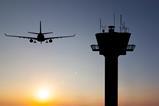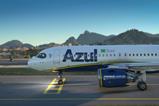Boom Supersonic’s development efforts are picking up speed, with the ambitious Colorado-based firm revealing on 23 July that it has completed design of its Overture airliner’s flightdeck and that its XB-1 demonstrator will likely return to the skies within the week.
Chief executive Blake Scholl also disclosed during a briefing with reporters that Boom’s Symphony engine will be assembled in San Antonio through an expanded partnership with Texas-based StandardAero.
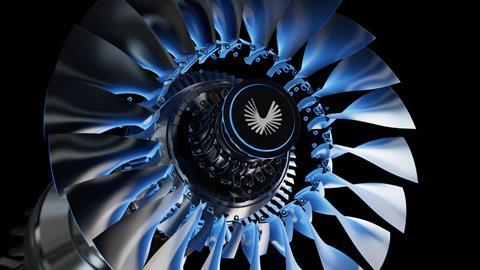
“As we stand here at Farnborough in 2024, it’s now been two decades since either Boeing or Airbus has launched an all-new airliner programme,” he says. “We’re in danger of going a generation without new airliners. We’ve stopped progressing and, in many ways, we’ve gone backwards.
“It’s never been more clear that passengers and airlines are not well-served by the duopoly we have today,” he adds.
Scholl has long maintained that demand for the return of supersonic passenger flight is strong, and that Boom is positioned to shake up the airline industry by introducing a clean-sheet design for a jet that will carry 64-80 passengers and fly at Mach 1.7.
The company has taken several recent steps towards realising its goal, Scholl says. In March, Boom achieved first flight of its XB-1, which he calls the “first independently developed supersonic jet and the first new civil supersonic airplane to fly since Concorde in 1969”.
After the demonstrator’s maiden flight at Mojave Air & Space Port in California, it was clear that Boom had “one notable item to address”, Scholl says.
“We actually had better-than-forecasted handling qualities on both pitch and yaw,” he says. “But as our test pilot put it, roll was a little bit exciting.”
In response, Boom has successfully installed a “digital stability augmentation system for roll”. The aircraft completed a final taxi test with the stability system activated on 23 July.
“We’re going to be back in the air for XB-1 flight two as soon as weather permits – most likely well within the week,” Scholl says.
Boom plans to break the sound barrier with XB-1 before year’s end.
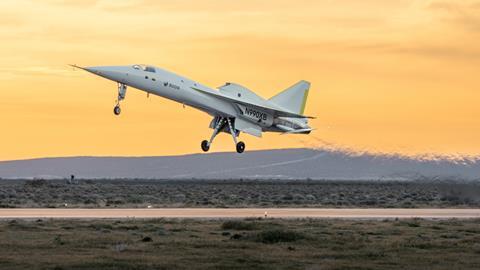
The supersonic demonstrator will inform development of Overture, which Scholl describes as an “all-business-class supersonic airliner for transoceanic, flying at fares 75% lower than what it took to fly on Concord”. He says Overture will enable flights between Tokyo and Seattle in under five hours.
The company projects airline demand for more than 1,000 Overture jets based on the number of first- and business-class air travellers flying on routes Boom has identified as ripe for supersonic disruption.
“All of this means we’re going to build a lot of Overtures,” he says.
Boom recently completed construction of its North Carolina-based Overture Superfactory. “That first final assembly line is designed to produce 33 aircraft per year, and we have space reserved on our campus to build at least two, possibly three, assembly lines in Greensboro, producing up to 100 Overture aircraft every year,” he says.
Having made the controversial decision to develop its own Symphony engine 18 months ago, Boom has completed the engine’s concept design, built the first test parts and begun hardware rig testing.
It plans to have a full-scale Symphony engine core running on a test stand by the end of 2025.
Boom has identified commercial and military applications for its Symphony engines beyond powering Overture, Scholl says.
“To build that many engines, we decided it was best to select a partner with deep experience manufacturing both commercial as well as military supersonic engines,” he says.
To that end, Boom is expanding its existing partnership with StandardAero, which will devote about 9,290sq m (100,000sq ft) of space to assembling Symphony engines at its campus in San Antonio.
“At StandardAero, we’re all about speed and execution, and that’s why I believe we are going to be great partners,” says Russell Ford, StandardAero’s chief executive.
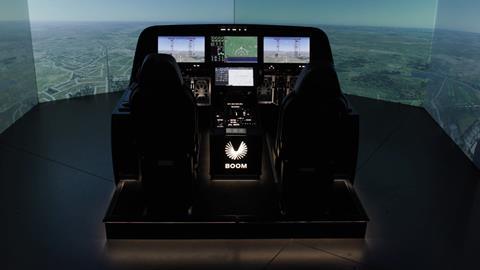
Boom also revealed its Anthem flightdeck, a highly digital “marriage of hardware and software” that eliminates hundreds of physical controls in favour of touch-screens produced by Honeywell Aerospace.
The flightdeck features four touch-screen displays, which are central to the pilot-aircraft interface.
“Every single function on the airplane is accessible through touch,” Scholl says. Care has been taken to preserve physical aspects of handling the aircraft, however.
“On today’s flightdecks, pilots have to choose between automation and having a tactile feel of how the airplane is flying,” he says. ”We’ve incorporated dual-force feedback sidesticks. Overture’s fly-by-wire system sends artificial feel to the stick, giving the pilot a tactile stick and rudder experience.”
Anthem includes headboard displays from Universal Avionics and sidesticks from BAE Systems.
Boom expects most Overture landings to be automatic, but pilots can choose between two augmented reality options for manual landings – a camera view on the primary flight display that allows pilots to see through the aircraft’s elongated nose, and a head-worn display allowing pilots to “see outside the airplane”, Scholl says.
An Overture simulator is on display in Boom’s chalet at Farnborough air show.
Updated to reflect completion of taxi test on 23 July























